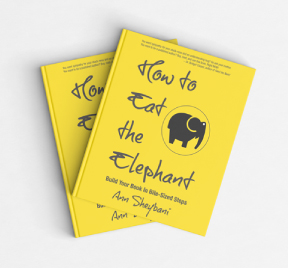Writing
Another Reason to Nix the Egocentric Bullshit
November 12, 2017
A few weeks back I sat at a conference in Dallas and listened to a young man speak on stage. He was raising money for a charity. I was blown away, as was everyone in that room, not just by his mission–bringing clean water to third world villages to prevent disease–but by his expert positioning story, his willingness to reveal his inglorious moments so we could see him for what he was, a flawed human being, just like us.
People want to know that you’ve overcome challenges, maybe even the same ones they’re facing. They want to know that you’ve had your own on-your-knees moment—that horrible moment when you recognized that something had to change in your life; that you couldn’t go on the way you had been; that the status quo was no longer a viable option. It’s a horrible moment. A moment that often represents total failure. It represents pain. This is that personal stuff we generally like to hide, not write about, or speak on. We experts don’t like to admit we haven’t had our act together since day one. But that shameful stuff, is actually the stuff that sells.
I’ve never donated that much money to a charity in my life. But there was no way I couldn’t open my wallet after that talk, after the stuff this man revealed. I would have given him the keys to my car, assuming he could get anything for a 1999 Toyota Corolla with no hubcaps.
I wasn’t alone. In that twenty minutes he raised nearly $200,000.
That there is how you know you’ve got an effective expert positioning story.
By the way. The design of an expert positioning story is to tell a consistent story about who you are, why your message is important, and what unique expertise you bring to your market. This story is meant to connect you to your audience, establish authority, inspire hope, and motivate action.
Your expert positioning story would generally appear within the first two chapters of your book, or during the first five minutes of your talk.
In other words, if you’re writing a book for your business or giving speeches, you’ll need to include an expert positioning story because people need to know why they should bother listening to you.
The problem with most expert positioning stories is that they usually sound like egocentric bullshit. That’s because most experts, at least at the start of their careers, insist on blathering on about their accomplishments, their credentials, and the media outlets they’ve been featured in. The intent, of course, is to wow the audience; to have everyone believe they came out of their mothers’ womb a veritable superstar because, as an expert, you can’t go having chinks in the ole’ armor.
Instead of connecting with an audience, they drive in a big, fat wedge.
Here’s what I learned totally by accident. Personal story sells, more specifically, pain stories sell. And when I say sell, I’m not simply referring to an exchange of money for goods or services, although that’s nice, don’t get me wrong. I mean changing people’s minds, or getting them on board, or influencing them in some tangible way.
The more personal the stories we tell, the more we reveal about ourselves, the more willing people are to listen to what we have to say, to buy what we “sell”.
Honesty, vulnerability, and authenticity sells. Personal stories sell. Egocentric bullshit, not so much.
I could devote 500 pages to why I know this to be true, but I’ll spare you. Plus, I’m about to board another plane.



